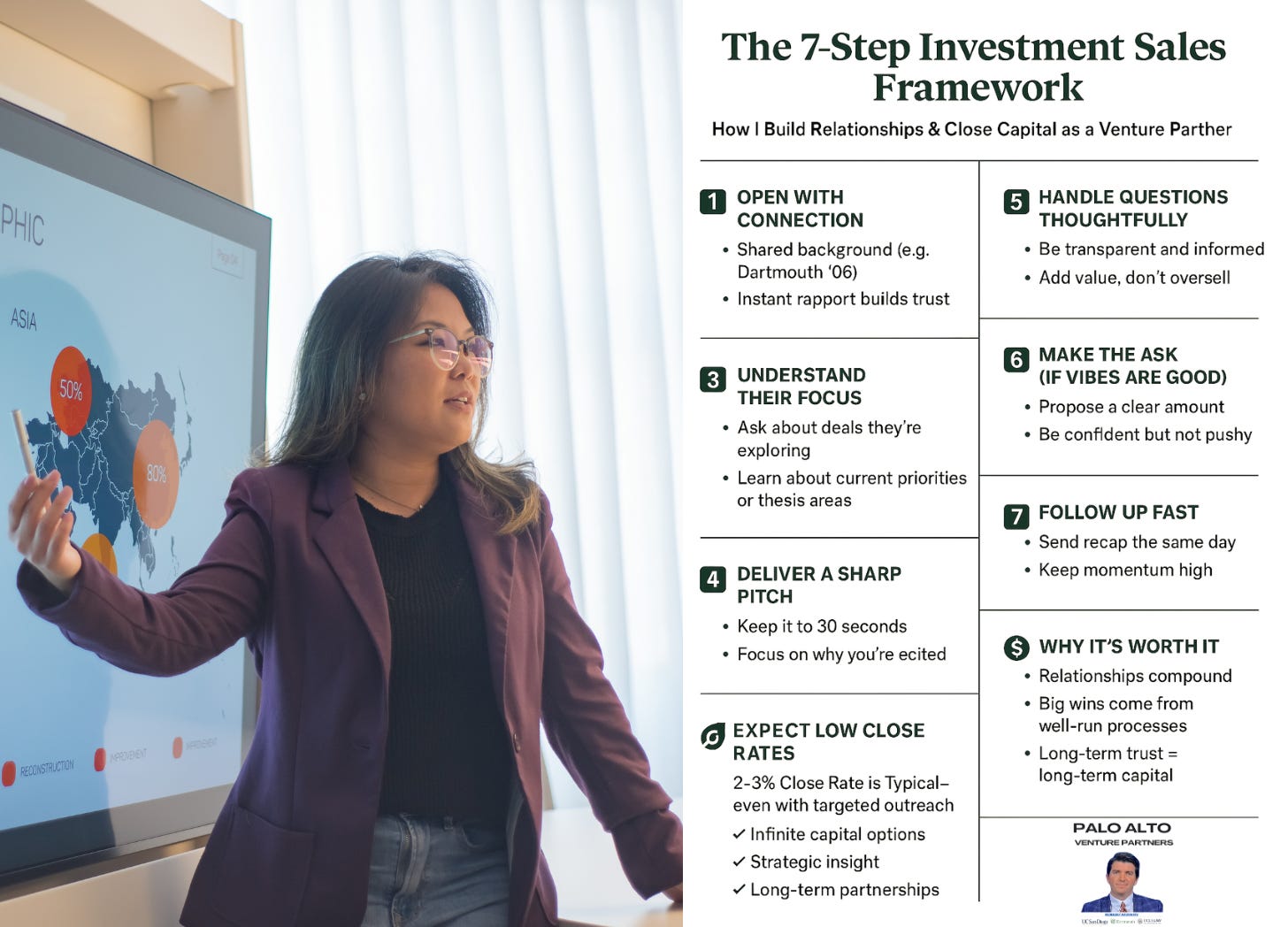The Art of Raising Capital: A Personal Framework for Investor Conversations
In my role as a venture partner and operator of individual SPVs, I’ve spent countless hours pitching deals and building relationships with investors. While every conversation has its nuances, I’ve found the rhythm of a good investment sales call tends to follow a clear and consistent formula. It’s less about pushing a product and more about human connection, mutual respect, and intellectual alignment.
The conversation usually begins with a point of personal similarity—perhaps we were both at Dartmouth in 2005, or share a mutual connection in the ecosystem. This small gesture goes a long way in establishing trust and familiarity. From there, I’ll ask about their week or weekend plans—not as filler, but as a chance to understand their cadence, mood, and energy. It sets a friendly tone and gives me a read on how engaged they might be.
Then I pivot to what they’re working on: what kinds of deals are on their radar, what trends they’re noticing, and where they’re allocating time and capital. This serves two purposes—it deepens the relationship, and gives me vital data on how to position the deal I’m about to pitch.
When it’s my turn, I give a crisp 30-second overview of why I’m excited about the opportunity. The pitch is short on purpose; if they’re intrigued, the rest of the call can naturally evolve into questions, deeper dives, and strategic insights.
If the conversation feels right and there’s real rapport, I make the ask directly—typically suggesting a specific check size.
Then I follow up that same day. Speed signals professionalism and interest, and it helps them remember the momentum of the call.
Most investors can read pitch decks or tear sheets on their own. The real purpose of a live conversation is for them to assess the person behind the deal. Are you someone they can see themselves working with over a 5-, 10-, or even 15-year horizon? Do you bring them closer to a thesis, an insight, or a corner of the market they care about?
Investors want returns—but they’re also investing in relationships, access, and education. Generosity with your time goes a long way, though it’s equally important to establish clear boundaries. Respect is mutual.
Even with highly targeted outreach, a 2–3% close rate is the norm in early-stage fundraising. There are near-infinite places for investors to place capital, and selling someone on a long-shot thesis, a tax incentive like QSBS, or the possibility of an outsized return is no easy task. But that’s precisely why the rewards—when they hit—are so extraordinary.
- Rob


